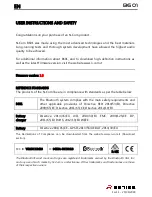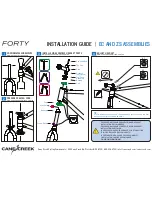
48
English
5.2.4 OUTPUT MUX CONFIGURATION
The CONFIGURATION -> OUTPUT -> MUX 1 / MUX 2 / MUX 3 / MUX 4 / MUX 5 / MUX 6 / MUX 7 / MUX 8
menu allows to access the output MUX configuration page and decide the output digital mux characteristics
in according to the DVB-T standard.
Fig. 8
The RF mux output frequency can be modified by frequency (entering the frequency and the bandwidth), or
by channel (entering the RF channel) in according to the digital standard available on the different countries.
The output mux mode allow to decide for a single, twin or QUAD output digital adjacent modulators
NOTE: The RF output multiplexes are not independent but belong to the same output channel group by the
following parameters: the output frequency, the bandwidth and the output level. Therefore when these pa-
rameters are modified in a single output multiplex, also the setting of the other multiplexex belonging to the
same group will occur. The two groups are divided as follows: MUX1-MUX2-MUX3-MUX4 and MUX5-MUX6-
MUX7-MUX8.
The RF level sets the output power in dBuV, in the range foreseen by the technical specification (75 - 95
dbuV).
Below are a few parameters that concern the DVB-T modulation standard:
FEC (1/2, 2/3, 3/4, 5/6, 7/8), guard interval (1/4,1/8,1/16,1/32), constellation (QPSK,16QAM and 64QAM), num-
ber of carriers (2K), spectrum (normal or inverted).
The “Alarm overflow” checkbox (if selected) shows if a band overflow has to be notified to the user by the led
on the bottom or not.
NOTE: CLICK ON “SAVE” TO STORE THE DEFINITIVE CONFIGURATION
Summary of Contents for D-Matrix 8T
Page 115: ...115 Note...
















































